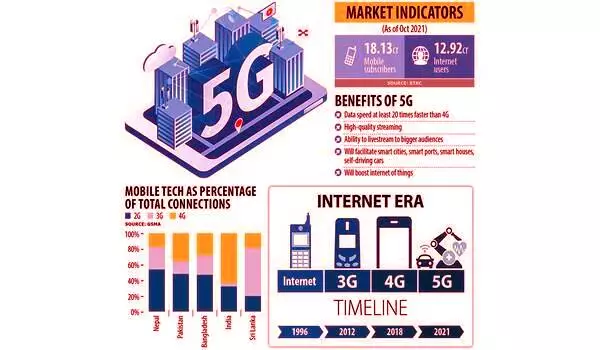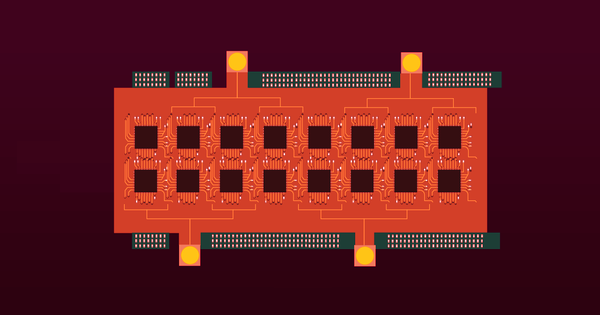In telecommunications, 5G is the fifth-generation technology standard for broadband cellular networks, which cellular phone companies began deploying globally in 2019. It is the planned successor to 4G networks, which connect most current cellphones. According to the GSM Association, 5G networks will have more than 1.7 billion subscribers by 2025.
A novel phased-array beamformer for the 5G millimeter wave (mmWave) band has recently been developed. The innovative design applies two well-known techniques — the Doherty amplifier and digital pre-distortion — to a mmWave phased-array transceiver and overcomes the issues in conventional designs, producing exceptional energy and area efficiency and outperforming other state-of-the-art 5G transceivers.
5G networks are becoming more common around the world. Many 5G consumer devices are already benefiting from faster speeds and lower latency. However, due to technological limitations, some 5G frequency bands are not being used effectively. These frequency bands include the New Radio (NR) 39 GHz band, but vary by country and range from 37 GHz to 43.5 GHz. The NR band outperforms other lower frequency bands used by 5G networks today in terms of performance. For example, it enables ultra-low communication latency, data rates of over 10 Gb/s, and a massive capacity to accommodate multiple users.
Our proposed bidirectional implementation for the amplifier is very area-efficient. Additionally, thanks to its co-design with a wafer-level chip-scale packaging technology, it enables low insertion loss. This means that less power is lost as the signal traverses the amplifier.
Professor Kenichi Okada
These achievements, however, come at a cost. High-frequency signals are rapidly attenuated as they travel through space. As a result, it is critical that the transmitted power be concentrated in a narrow beam that is aimed directly at the receiver. This is theoretically possible using phased-array beamformers, which are transmission devices made up of an array of carefully phase-controlled antennas. Working at high frequency regions of the NR band, on the other hand, reduces the efficiency of power amplifiers because they suffer from nonlinearity issues, which distort the transmitted signal.
To address these issues, a team of researchers led by Professor Kenichi Okada from Tokyo Institute of Technology (Tokyo Tech), Japan, have recently developed, in a new study, a novel phased-array beamformer for 5G base stations. Their design adapts two well-known techniques, namely the Doherty amplifier and digital predistortion (DPD), into a mmWave phased-array transceiver, but with a few twists. The researchers will present their findings in the upcoming 2022 IEEE Symposium on VLSI Technology and Circuits.

The Doherty amplifier, developed in 1936, has seen a resurgence in modern telecommunication devices owing to its good power efficiency and suitability for signals with a high peak-to-average ratio (such as 5G signals). The team at Tokyo Tech modified the conventional Doherty amplifier design and produced a bi-directional amplifier. What this means is that the same circuit can both amplify a signal to be transmitted and a received signal with low noise. This fulfilled the crucial role of amplification for both transmission and reception.
“Our proposed bidirectional implementation for the amplifier is very area-efficient. Additionally, thanks to its co-design with a wafer-level chip-scale packaging technology, it enables low insertion loss. This means that less power is lost as the signal traverses the amplifier,” explains Professor Okada.
Despite its many advantages, the Doherty amplifier can exacerbate nonlinearity issues caused by mismatches in the phased-array antenna’s elements. The team approached the issue in two ways. First, they used the DPD technique, which involves distorting the signal before transmission in order to effectively cancel out the amplifier’s distortion. In contrast to traditional DPD approaches, their implementation used a shared look-up table (LUT) for all antennas, reducing circuit complexity.
Second, they improved the phased array’s overall linearity by adding inter-element mismatch compensation capabilities. “We compared the proposed device to other cutting-edge 5G phased-array transceivers and discovered that by compensating for inter-element mismatches in the shared-LUT DPD module, ours demonstrate lower adjacent channel leakage and transmission error,” Professor Okada says. “Hopefully, the device and techniques described in this study will allow us to all benefit from 5G NR sooner!”





